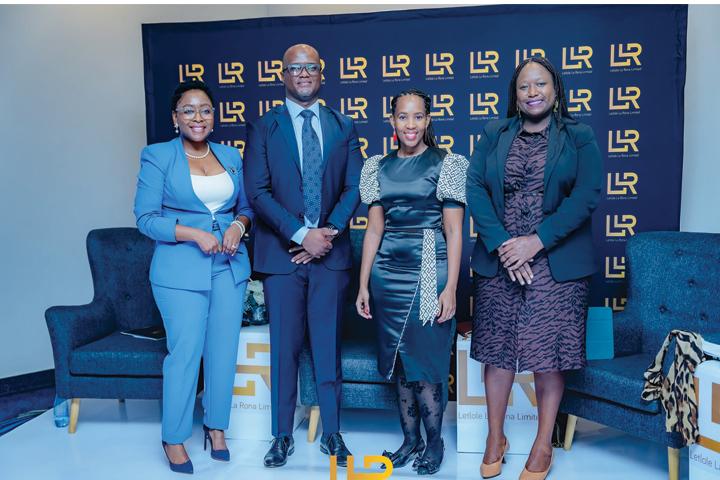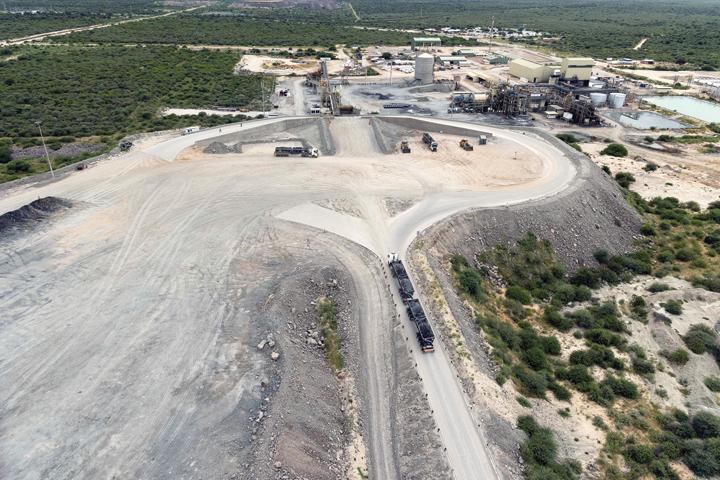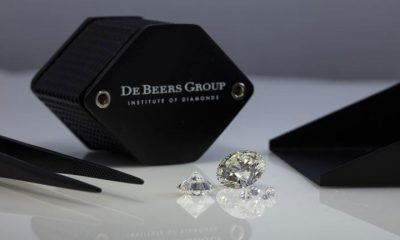Slow recovery of global diamond market extends ODC closure
The economic shock occasioned by COVID-19 on the global diamond market has delivered the heaviest blow to Botswana’s wholly state owned Okavango Diamond Company (ODC), the worst since its establishment in 2012.
While other diamond operations across the value chain gradually reopen, ODC will remain closed until diamond market conditions fully recover. This was revealed by Permanent Secretary in the Ministry of Mineral Resources, Green Technology & Energy Security, Mmetla Masire this week.
Following a slow year for the global diamond industry in 2019 owing to the US-China trade war, the industry realized a slight upswing in the first month of 2020, spilling over from recovery signs in late 2019.
However all that was reversed by COVID-19. The virus, which broke in late 2019 in the Wuhan province of China intensified in February, spreading across the world, curtailing movements and international travels.
With the diamond industry, global lockdowns and travel restrictions resulted in muted rough diamond trade, closure of cutting and polishing firms, jewelry outlets and other segments of trade across the value chain.
Mmetla Masire noted that key markets like India are still relatively closed with little demand for rough import for those in operation, as inventories are still swamped up with stock piles. “ODC will remain closed because demand of rough diamonds globally is still very low, so ODC management took a decision to remain closed until demand fully recovers,” he said.
Masire reiterated that major markets for Botswana diamonds such as United States are still on lockdown. He said, “ODC sells its diamonds through auctions; it is still very difficult to hold auctions as of now, so the company will remain closed, with management working from home.”
Okavango Diamond Corporation (ODC) is a wholly state owned diamond marketing and sales company established in 2012 to sell Botswana diamonds outside De Beers’s channels and price books.
ODC markets and sells 15 % of Debswana diamonds after being sorted and valued by Diamond Trading Company (DTCB), while 85 % is sold by De Beers Global Sightholder Sales (DBGSS). Debswana and DTCB are 50-50 ventures of De Beers Group and Botswana Government. DBGSS is wholly owned by De Beers Group.
Botswana Government has a direct 15 % stake in De Beers Group, the remaining 85 % of De Beers Group is owned by Anglo American. Over 60 % of De Beers global production comes from Botswana (Debswana). Meanwhile Debswana, Diamond Trading Company (DTCB), De Beers Global Sightholder Sales (DBGSS) have opened and resumed operations at 60- 70 % workforce.
Mmetla Masire further revealed that DBGSS has started shipping some diamonds to their sightholders in a bid to cultivate market and trading activity amid COVID-19 imposed new normal.
OKAVANGO BLUE YET TO SELL
Okavango Diamond Company has also deferred the sale of Okavango Blue, the magnificent oval shaped blue diamond weighing over 20 carats, unearthed at Debswana Orapa mine at over 40 carats rough weight in 2018.
The sparkling Type IIb ‘Fancy Deep Blue’ unveiled to the world in Gaborone as 20 carats polished last year is yet to sell as demand and prices are still very low to inspire purchase of such a magnificent gem.
The Gemological Institute of America (GIA), has graded the diamond as an Oval Brilliant Cut, VVS2 clarity making it one of the highest polished colour classifications attainable for any blue diamond and at 20.46 carats it sits in the very top bracket of all-time historical blue diamond finds.
Its unique and vibrant blue colour, is created by the molecular inclusion of the rare mineral boron which between 1-3 billion years ago was present in the rocks of ancient oceans during violent diamond forming volcanic activity. Okavango Blue will be showcased over the coming months to promote Botswana as a leading global producer of natural ethical diamonds with an anticipated sale toward the end of the year.
GLOBAL DIAMOND INDUSTRY CRISIS
A couple of months into serious measures to slow the spread of the virus, it has already squashed diamond miners’ dawning hopes of a recovery. Alrosa the world’s largest diamond producer by output, last week reported 95% decline in sales during April, when gauged against the same months last year. This resulted the Russian state-owned deciding to halt production at two of its mines, citing worsening market conditions.
De Beers, the world’s largest producer by value, cut 2020 production guidance by a fifth last month. It had earlier cancelled its April sales event. Canada’s Dominion Diamond Mines, the controlling owner of Ekati mine and a 40% partner to Rio Tinto in the Diavik mine, filed for insolvency protection in April.
Lucara Diamond another Canadian company, posted last week a net loss of $3.2 million, or $0.01 a share, for the first three months of the year. The figure was in sharp contrast with the $7.4 million in net income, or $0.02 in earning per share the miner reported in the same period last year.
South Africa’s Petra Diamonds has recently delayed interest payments to borrow $21 million in new debt, a crucial move to keep the company afloat. Investment banks are increasingly reluctant to extend credit to diamond producers, as inventory is not being sold and defaults are possible, analysts have warned.
“We are concerned about oversupply of rough diamonds following the reopening of economies, as a lot of inventory could potentially be flooded into the system and the market might not be able to absorb all of it, resulting in increased pricing pressure,” said leading European diamond industry think tank, Learnbonds in a statement early this month.
Business
LLR transforms from Company to Group reporting

Botswana Stock Exchange listed diversified real estate company, Letlole La Rona Limited (“LLR” or “the Company” or “the Group”), posted its first set of group financial statements which comprise the Company and Group consolidated accounts, which show strong financial performance for the six months ended 31 December 2023, with improvements across all key metrics.
The Company commenced the financial year with the appointment of a Deputy Chairperson, Mr Mooketsi Maphane, in order to bolster its governance and enhance leadership continuity through the development of a Board and Executive Management Succession Plan.
At operational level, LLR increased its shareholding in Railpark Mall from 32.79% to 57.79% and proudly took over the management of this prime asset.
The CEO of LLR, Ms Kamogelo Mowaneng commented “During the period under review, our portfolio continued to perform strongly, with improvements across all key metrics as a result of our ongoing focus on portfolio growth and optimisation.
“We are pleased to report a successful first half of the 2024 financial year, where we managed to not only grow the portfolio through strategic acquisitions and value accretive refurbishments but also recycled capital through the disposal of Moedi House as well as the ongoing sale of section titles at Red Square Apartments. The acquisition of an additional 25% stake in JTTM Properties significantly uplifted the value of our investment portfolio to P2.0 billion at a Group level. Our investment portfolio was further differentiated by the quality of our tenant base, as demonstrated by above market occupancy levels of 99.15% and strong collections of above 100% for the period”.
The growth in contractual revenue of 9% from the prior year’s P48.0 million to the current year P52.2 million, increased income from Railpark Mall, coupled with high collection rates, has enabled the company to declare a distribution of 9.11 thebe per linked unit, which is in line with the prior year.
In line with its strategic pillars of ‘Streamlined and Expanded Botswana Portfolio’ as well as ‘Quality African Assets’, the Group continuously monitors the performance of its investments to ensure that they meet the targeted returns.
“The Group continues to explore yield accretive opportunities for balance sheet growth and funding options that can be deployed to finance that growth” further commented the CEO of LLR Ms Kamogelo Mowaneng.
Ms Mowaneng further thanked the Group’s stakeholders for their continued support and stated that they look forward to unlocking further value in the Group.
Business
Botswana’s Electricity Generation Dips 26.4%
The Botswana Power Corporation (BPC) has reported a significant decrease in electricity generation for the fourth quarter of 2023, with output plummeting by 26.4%. This decline is primarily attributed to operational difficulties at the Morupule B power plant, as per the latest Botswana Index of Electricity Generation (IEG) released recently.
Local electricity production saw a drastic reduction, falling from 889,535 MWH in the third quarter of 2023 to 654,312 MWH in the period under review. This substantial decrease is largely due to the operational challenges at the Morupule B power plant. Consequently, the need for imported electricity surged by 35.6% (136,243 MWH) from 382,426 MWH in the third quarter to 518,669 MWH in the fourth quarter. This increase was necessitated by the need to compensate for the shortfall in locally generated electricity.
Zambia Electricity Supply Corporation Limited (ZESCO) was the principal supplier of imported electricity, accounting for 43.1% of total electricity imports during the fourth quarter of 2023. Eskom followed with 21.8%, while the remaining 12.1, 10.3, 8.6, and 4.2% were sourced from Electricidade de Mozambique (EDM), Southern African Power Pool (SAPP), Nampower, and Cross-border electricity markets, respectively. Cross-border electricity markets involve the supply of electricity to towns and villages along the border from neighboring countries such as Namibia and Zambia.
Distributed electricity exhibited a decrease of 7.8% (98,980 MWH), dropping from 1,271,961 MWH in the third quarter of 2023 to 1,172,981 MWH in the review quarter.
Electricity generated locally contributed 55.8% to the electricity distributed during the fourth quarter of 2023, a decrease from the 74.5% contribution in the same quarter of the previous year. This signifies a decrease of 18.7 percentage points. The quarter-on-quarter comparison shows that the contribution of locally generated electricity to the distributed electricity fell by 14.2 percentage points, from 69.9% in the third quarter of 2023 to 55.8% in the fourth quarter. The Morupule A and B power stations accounted for 90.4% of the electricity generated during the fourth quarter of 2023, while Matshelagabedi and Orapa emergency power plants contributed the remaining 5.9 and 3.7% respectively.
The year-on-year analysis reveals some improvement in local electricity generation. The year-on-year perspective shows that the amount of distributed electricity increased by 8.2% (88,781 MWH), from 1,084,200 MWH in the fourth quarter of 2022 to 1,172,981 MWH in the current quarter. The trend of the Index of Electricity Generation from the first quarter of 2013 to the fourth quarter of 2023 indicates an improvement in local electricity generation, despite fluctuations.
The year-on-year analysis also reveals a downward trend in the physical volume of imported electricity. The trend in the physical volume of imported electricity from the first quarter of 2013 to the fourth quarter of 2023 shows a downward trend, indicating the country’s continued effort to generate adequate electricity to meet domestic demand, has led to the decreased reliance on electricity imports.
In response to the need to increase local generation and reduce power imports, the government has initiated a new National Energy Policy. This policy is aimed at guiding the management and development of Botswana’s energy sector and encouraging investment in new and renewable energy. In the policy document, Minister of Mineral Resources, Green Technology and Energy Security Lefoko Moagi stated that the policy aims to transform Botswana from being a net energy importer to a self-sufficient nation with surplus energy for export into the region. Moagi expressed confidence that Botswana has the potential to achieve self-sufficiency in electric power supply, given the country’s readily available energy resources such as coal and renewable sources.
Business
MMG acquires Khoemacau in a transaction valued at P23Bn

MMG Limited, the Hong Kong-based mining company specializing in base metals, has successfully concluded the acquisition of Khoemacau Copper Mine, a state-of-the-art, world-class copper asset nestled in the northwest of Botswana.
On Monday, MMG announced that the acquisition of Khoemacau Mine in Botswana was finalized on 22nd March 2024. “This acquisition enriches the company’s portfolio with a top-tier, transformative growth project and signifies a monumental milestone in the Company’s journey,” MMG communicated in an official statement published on the Hong Kong Stock Exchange.
Upon completion of the acquisition, MMG remitted to the Sellers an Aggregate Consideration of approximately US$1,734,657,000 (over P23 billion), a sum subject to potential adjustments post-Completion.
In addition to the Aggregate Consideration, MMG, in accordance with the Agreement, advanced an aggregate amount of approximately US$348,580,000 (over P4.5 billion) as the Aggregate Debt Settlement Amount, to settle certain debt balances of the Target Group (Cuprous Capital/Khoemacau).
On November 21, 2023, Khoemacau announced that the shareholders of its parent company [Cuprous Capital] had agreed to sell 100% of their interests to MMG Limited.
MMG is a global resources company that mines, explores, and develops copper and other base metals projects on four continents. The company is headquartered in Melbourne, Australia, and has a significant shareholder, China Minmetals Corporation, which is China’s largest metals and minerals group owned by the Government of the People’s Republic of China.
On December 22, 2023, Khoemacau Copper Mining (Pty) Ltd received the approval from the Minister of Minerals and Energy of Botswana regarding the transfer of a controlling interest in the Project Licenses and Prospecting Licenses associated with the Khoemacau Copper Mine, a result of the Acquisition.
The Botswana Competition & Consumer Authority (CCA) on January 29, 2024, notified the market that it had given its approval for the takeover of Khoemacau Copper Mining by MMG Limited.
On January 29, 2024, the CCA issued a merger decision to the market, stating that after conducting all necessary assessments, it was ready to proceed.
The Competition Authority affirmed that the structure of the relevant market would not significantly change upon implementation of the proposed merger as the proposed transaction is not likely to result in a substantial lessening of competition, nor endanger the continuity of service in the market of mining of copper and silver ores and the production, and sale or supply of copper concentrate in Botswana.
Furthermore, the CCA stated that the proposed merger would not have any negative impact on public interest matters in Botswana as per the provisions of section 52(2) of the Competition Act 2018.
Earlier this month, Minister of Minerals & Energy, Lefoko Maxwell Moagi, informed parliament that his Ministry was endorsing the Khoemacau acquisition by MMG Limited. He noted that not only was the company acquiring the existing operation but also committing to an expansion program that would cost over $700 million to double production, create more jobs for Batswana, and increase taxes and royalties paid to the Government.



